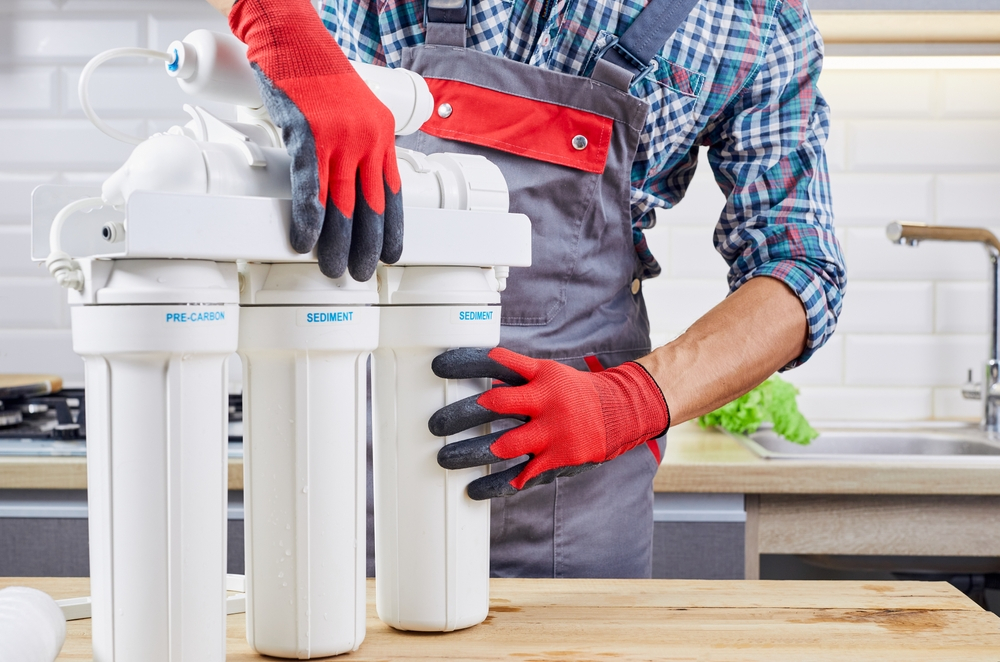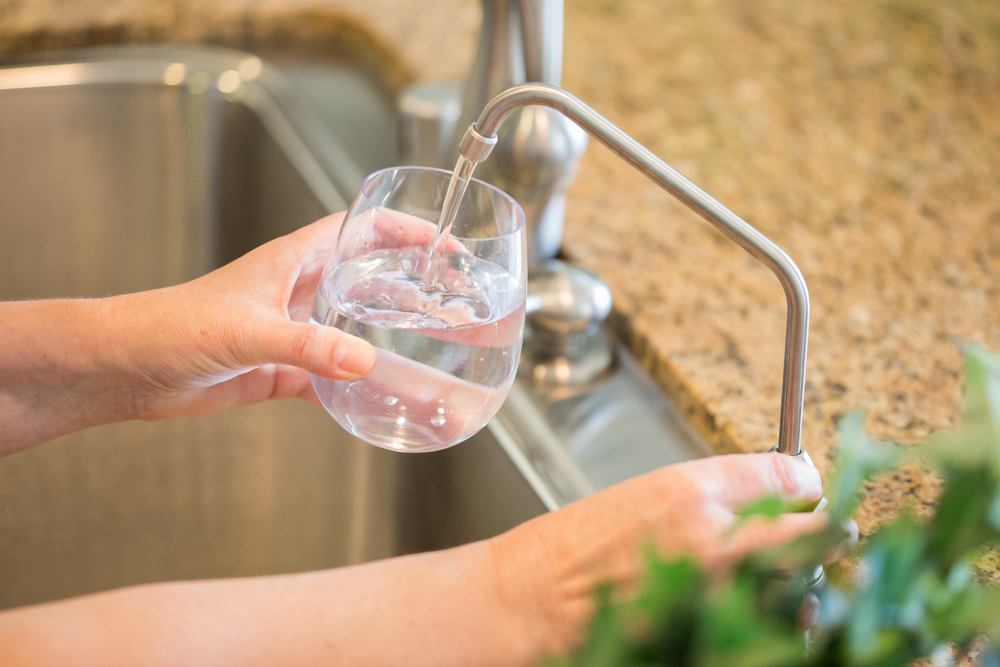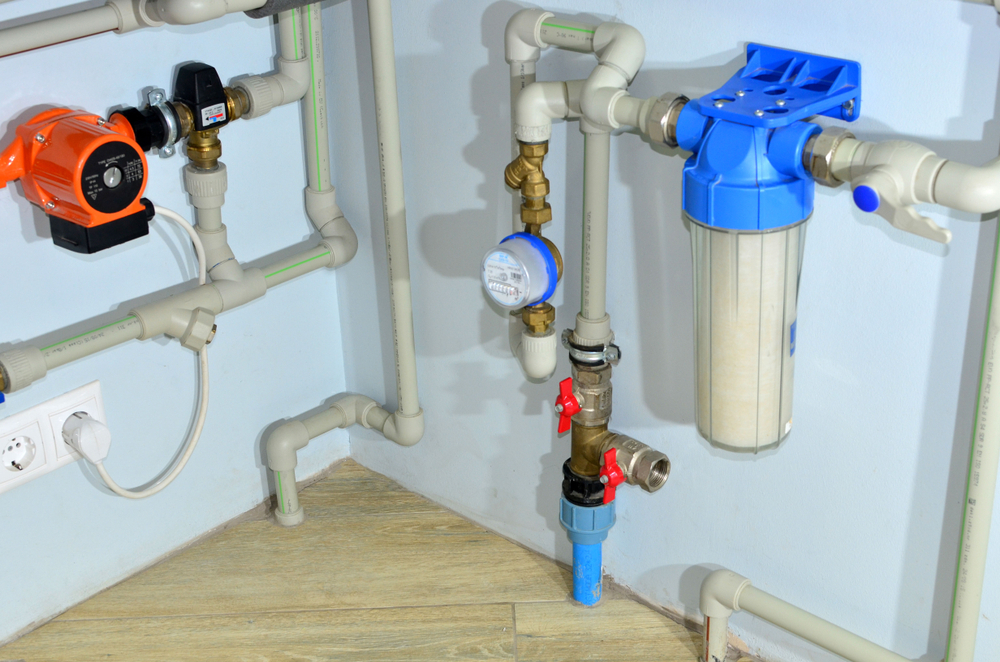Welcome to our comprehensive guide on choosing and installing a water filtration system for your home. In today’s world, the importance of clean and safe drinking water cannot be overstated. With increasing concerns about water contamination and pollutants, investing in a water filtration system has become a necessity rather than a luxury. This guide aims to provide you with all the information you need to make an informed decision about selecting and installing the right water filtration system for your home.

Importance of Clean Water
Clean water is essential for maintaining good health and well-being. Here’s why it matters:
Health Benefits:
Drinking contaminated water can pose serious health risks, including gastrointestinal illnesses, skin problems, and long-term health issues such as cancer. Contaminants such as bacteria, viruses, heavy metals, and chemicals can enter the water supply through various sources, including industrial runoff, agricultural activities, and aging infrastructure. A reliable water filtration system can remove these contaminants, ensuring that the water you drink is safe and healthy.
Improved Taste and Odor:
Many people are put off by the taste and odor of tap water, which can be attributed to the presence of chlorine, sulfur, or other chemicals used in the water treatment process. These additives are necessary for disinfection and controlling microbial growth but can leave behind an unpleasant taste and odor. Water filters, particularly carbon filters, can effectively remove these impurities, resulting in better-tasting and odor-free water that is more enjoyable to drink.
Protection for Appliances:
Hard water, which contains high levels of calcium and magnesium ions, can cause scale buildup in household appliances such as coffee makers, dishwashers, and washing machines. This can lead to decreased efficiency, increased energy consumption, and premature wear and tear on appliances. A water filtration system can help prevent scale buildup by removing minerals and other impurities from the water, thereby prolonging the lifespan of your appliances and saving you money on repairs and replacements.
Types of Water Filters
When it comes to water filtration, there are several types of filters to choose from, each with its own advantages and limitations:
Carbon Filters:
Carbon filters, also known as activated carbon or charcoal filters, are among the most common types of water filters used in homes. These filters contain activated carbon, which has a porous structure that can trap and absorb contaminants such as chlorine, volatile organic compounds (VOCs), pesticides, herbicides, and unpleasant tastes and odors. Carbon filters are available in various forms, including pitcher filters, faucet-mounted filters, countertop filters, and whole-house filtration systems. They are relatively affordable, easy to install, and require minimal maintenance.
Reverse Osmosis Filters:
Reverse osmosis (RO) is a water purification process that uses a semi-permeable membrane to remove a wide range of contaminants from water, including bacteria, viruses, dissolved solids, heavy metals, and chemicals. RO systems typically consist of multiple stages of filtration, including pre-filters, membrane filters, and post-filters, to ensure thorough purification. While RO systems are highly effective at producing clean and pure water, they tend to be more expensive upfront and require professional installation and periodic maintenance, including filter replacement and membrane cleaning.
UV Filters:
Ultraviolet (UV) water filtration systems use ultraviolet light to disinfect water and kill bacteria, viruses, and other microorganisms. UV light disrupts the DNA of microorganisms, preventing them from reproducing and rendering them harmless. UV filters are often used in conjunction with other types of filters, such as carbon filters or sediment filters, to provide comprehensive water purification. UV filtration is a chemical-free and environmentally friendly method of water treatment that does not alter the taste, color, or odor of the water. UV filters are low-maintenance and require only periodic bulb replacement to ensure continued effectiveness.
Factors to Consider When Choosing a Water Filtration System
Before purchasing a water filtration system for your home, it’s important to consider several factors to ensure that you select the right system for your specific needs:
Water Quality:
Start by testing your water to identify any contaminants that may be present, such as bacteria, viruses, heavy metals, chemicals, or sediment. This will help you determine which type of filter is best suited to address the specific contaminants in your water supply.
Budget:
Consider how much you are willing to spend on a water filtration system, taking into account not only the initial cost of the system but also ongoing maintenance and filter replacement costs. Keep in mind that while some types of filters may have a higher upfront cost, they may offer greater long-term savings in terms of improved water quality and reduced appliance maintenance.
Installation:
Consider whether you prefer a DIY installation or professional installation for your water filtration system. Some systems, such as pitcher filters and faucet-mounted filters, are designed for easy self-installation and require no special tools or expertise. However, more complex systems, such as whole-house RO systems, may require professional installation to ensure proper setup and functionality.
Maintenance

Step-by-Step Guide for Installing a Water Filtration System
Once you’ve chosen the right water filtration system for your home, follow these step-by-step instructions to install it properly:
Gather Your Tools and Materials:
Before you begin installation, gather all the necessary tools and materials, including wrenches, tubing, fittings, mounting hardware, and the filtration system itself. Read the manufacturer’s instructions carefully to ensure you have everything you need for a successful installation.
Turn Off the Water Supply:
Locate the main water shut-off valve for your home and turn it off to prevent any water from flowing while you work on installing the filtration system. Open a nearby faucet to relieve any pressure in the water lines and drain any remaining water from the pipes.
Choose a Location for the Filter Unit:
Select a suitable location for the filter unit, taking into account factors such as proximity to the main water supply line, available space for installation, and ease of access for maintenance and filter replacement. Ensure that the location is well-ventilated and protected from extreme temperatures and direct sunlight, as excessive heat or cold can affect the performance of the filtration system.
Install the Filter Unit:
Follow the manufacturer’s instructions to install the filter unit, whether it’s a countertop filter, under-sink filter, or whole-house filtration system. Depending on the type of system, installation may involve mounting the unit to a wall or cabinet, connecting it to the main water supply line, and securing any additional components such as pre-filters, post-filters, or UV lamps.
Connect the Plumbing:
Use tubing and fittings to connect the filter unit to the main water supply line, following the manufacturer’s instructions and local plumbing codes. Use a pipe cutter or hacksaw to cut the tubing to the appropriate length, and ensure that all connections are tight and secure to prevent leaks.
Flush the System:
Once the filter unit is installed and connected, flush the system by running water through it for a few minutes to remove any air bubbles and prime the filters for use. Open all faucets and valves in your home to allow water to flow freely and purge any trapped air from the plumbing system.
Check for Leaks:
After flushing the system, carefully inspect all connections and fittings for any signs of leaks or drips. Tighten any loose fittings with a wrench or adjust the tubing as needed to ensure a watertight seal. Wipe away any excess water with a dry cloth and check again for leaks.
Turn On the Water Supply:
Once you’re confident that the filtration system is properly installed and there are no leaks, turn the main water supply back on and allow water to flow through the system. Check the flow rate and water pressure at each faucet to ensure that the system is functioning as expected.
Run a Test:
Fill a glass with water from the filtered tap and taste it to ensure that it meets your expectations in terms of taste, odor, and clarity. If you notice any unusual tastes, smells, or discoloration, double-check the installation and consult the manufacturer’s instructions for troubleshooting tips.
Regular Maintenance:
Finally, establish a regular maintenance schedule for your water filtration system to ensure its continued effectiveness and longevity. Follow the manufacturer’s recommendations for filter replacement, cleaning, and servicing, and keep track of when each task is due to avoid lapses in maintenance.
Maintenance and Replacement
Regular maintenance is essential for keeping your water filtration system running smoothly and effectively. Here are some tips for maintaining and replacing your filters:
Change Filters Regularly:
Most water filters need to be replaced periodically to maintain optimal performance. The frequency of filter replacement depends on factors such as water quality, filter type, usage, and manufacturer recommendations. Carbon filters typically need to be replaced every 3 to 6 months, while RO membranes may last 1 to 2 years or longer before needing replacement. Check the manufacturer’s instructions for your specific filtration system to determine the recommended filter replacement schedule.
Clean the Filter Housing:
Periodically clean the filter housing and other components of your filtration system to remove any sediment, debris, or mineral buildup that may accumulate over time. Use a soft brush, sponge, or cloth to gently scrub the interior and exterior surfaces of the housing, and rinse thoroughly with clean water. Be careful not to use abrasive cleaners or harsh chemicals that could damage the filter or affect water quality.
Inspect for Leaks:
Regularly inspect all connections, fittings, and seals for any signs of leaks, drips, or moisture buildup. Check the filter housing, tubing, and faucet connections for tightness and integrity, and tighten or replace any damaged or worn components as needed. Address any leaks promptly to prevent water damage and ensure the continued effectiveness of your filtration system.
Monitor Water Quality:
Keep an eye on the taste, odor, and clarity of the water produced by your filtration system, as changes in water quality could indicate a problem with the system or the need for filter replacement. If you notice any unusual tastes, smells, colors, or particles in the water, perform a visual inspection of the system and test the water for contaminants if necessary. Consult the manufacturer’s instructions or contact customer support for assistance troubleshooting any issues with your filtration system.
Common Mistakes to Avoid
When choosing and installing a water filtration system, it’s important to avoid these common mistakes to ensure the best results:
Ignoring Water Quality:
Don’t assume that your tap water is safe to drink without testing it first. Water quality can vary widely depending on factors such as the source of the water, the treatment process, and environmental contaminants. Conduct a water quality test to identify any contaminants present in your water supply, and select a filtration system that is capable of removing those specific contaminants to ensure the safety and purity of your drinking water.
Skipping Maintenance:
Regular maintenance is essential for keeping your water filtration system functioning effectively and efficiently. Skipping maintenance tasks such as filter replacement, cleaning, and servicing can lead to decreased performance, reduced water quality, and potential health risks. Follow the manufacturer’s recommendations for maintenance and replacement intervals, and establish a regular schedule for performing these tasks to keep your filtration system in top condition.
Choosing the Wrong Filter:
Take the time to research and select the right type of filter for your specific needs and water quality concerns. Choosing the wrong filter can result in ineffective filtration, wasted money, and continued exposure to contaminants. Consider factors such as the type and level of contaminants present in your water, the flow rate and capacity of the filtration system, and your budget and maintenance preferences when choosing a filter. If you’re unsure which filter is best for your situation, consult a water quality expert or professional installer for personalized recommendations and advice.

Conclusion
Investing in a water filtration system is a wise decision for any homeowner who values clean, safe, and great-tasting water. With a wide range of filtration systems available on the market, there’s sure to be a solution that meets your needs, budget, and preferences. By considering factors such as water quality, budget, installation, maintenance, and filter selection, you can choose the right filtration system for your home and enjoy the benefits of purified water for years to come. Remember, clean water is essential for good health and well-being, so don’t wait—take action to protect yourself and your family by installing a water filtration system today!
Plumbing Services CA
https://maps.app.goo.gl/31Yt4rhDrainzNJ4A
(279) 203-0765
https://plumbingservicesca.com/
